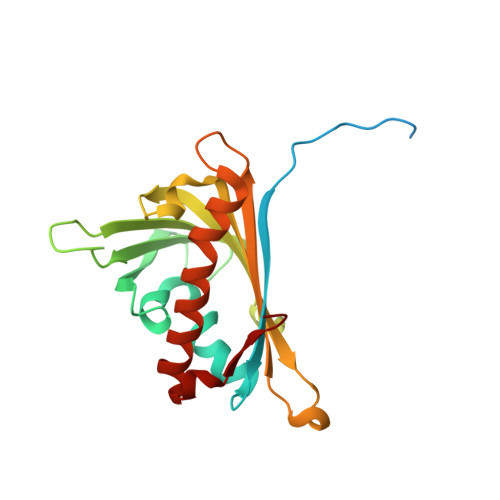Enzyme discovery beyond homology: a unique hydroxynitrile lyase in the Bet v1 superfamily.
Lanfranchi, E., Pavkov-Keller, T., Koehler, E.M., Diepold, M., Steiner, K., Darnhofer, B., Hartler, J., Van Den Bergh, T., Joosten, H.J., Gruber-Khadjawi, M., Thallinger, G.G., Birner-Gruenberger, R., Gruber, K., Winkler, M., Glieder, A.(2017) Sci Rep 7: 46738-46738
- PubMed: 28466867
- DOI: https://doi.org/10.1038/srep46738
- Primary Citation of Related Structures:
5E46, 5E4B, 5E4D, 5E4M - PubMed Abstract:
Homology and similarity based approaches are most widely used for the identification of new enzymes for biocatalysis. However, they are not suitable to find truly novel scaffolds with a desired function and this averts options and diversity. Hydroxynitrile lyases (HNLs) are an example of non-homologous isofunctional enzymes for the synthesis of chiral cyanohydrins. Due to their convergent evolution, finding new representatives is challenging. Here we show the discovery of unique HNL enzymes from the fern Davallia tyermannii by coalescence of transcriptomics, proteomics and enzymatic screening. It is the first protein with a Bet v1-like protein fold exhibiting HNL activity, and has a new catalytic center, as shown by protein crystallography. Biochemical properties of D. tyermannii HNLs open perspectives for the development of a complementary class of biocatalysts for the stereoselective synthesis of cyanohydrins. This work shows that systematic integration of -omics data facilitates discovery of enzymes with unpredictable sequences and helps to extend our knowledge about enzyme diversity.
- Austrian Centre of Industrial Biotechnology, Petersgasse 14, 8010 Graz, Austria.
Organizational Affiliation:



















